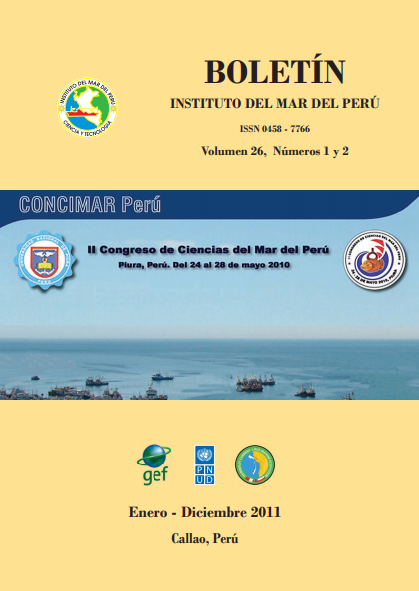pH as a tracer of biogeochemical variability in the Humboldt System
Keywords:
pH, Upwelling, Productivity, System of Humboldt, PerúAbstract
We analyzed information on biogeochemical parameters such as pH, CO2 partially dissolved, chlorophyll-a, oxygen, salinity and temperature, obtained in the Humboldt system off Peru in the years 2007-2009, in order to understand the importance of pH as a variable key to tracing the biogeochemical variability of the Humboldt upwelling System. Cold Coastal Waters (ACF) rich in nutrients show an inverse relationship with pH, in that sense values from 7.6 to 8.0 were associated with the occurrence of upwelling, in cold conditions and La Niña 2007, the pH is predominant below 8.0, and for Subtropical Surface Waters have a pH around 8.3. Productivity in the summer increases due to factors such as light intensity cores generating higher chlorophyll-a to 10.0 µg.L-1, as constituents of the biochemical reaction of photosynthesis takes into account the CO2 compound immediately and consumption of hydronium ions, in extreme situations of fertilization, has a high pH between 8.2 and even 9.0, where the dissolved oxygen content exceeding 6.0 mL.L-1
Downloads
Metrics
Downloads
Published
How to Cite
Issue
Section
License
Copyright (c) 2011 Instituto del Mar del Perú

This work is licensed under a Creative Commons Attribution 4.0 International License.





